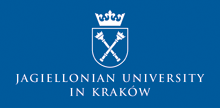Speaker
Description
Recently an increase of protontherapy effectiveness for irradiations occurring in the presence of 11B atoms has been observed. A role in this effect should be played by the high-LET alpha particles mainly generated by the p(11B,a)2a channel, which has a cross section of the order of 1 barn at very low incident proton energy. However, analytical calculations indicate that the number of alphas produced is too low to yield the observed biological effects.
The Italian INFN institute recently funded a project called NEPTUNE (Nuclear process-driven Enhancement of Proton Therapy UNraVeled) with the main aim to study and understand this radiobiological effect.
The main objectives of NEPTUNE will be the consolidation of these results, extending them to include another nuclear reaction between protons and 19F and focusing on understanding all the physical and biological mechanisms involved. Physical characterization of the radiation field will be performed with tissue-equivalent detectors of various types, all based on micro- and nanodosimetric techniques. At the same time, biological measurements will be performed for different cell lines using several endpoints. New biological approaches will be to considered to study the problem from different points of view, which could reveal mechanisms not yet considered. All experimental data will be compared with predictions from analytical and Monte Carlo models.

